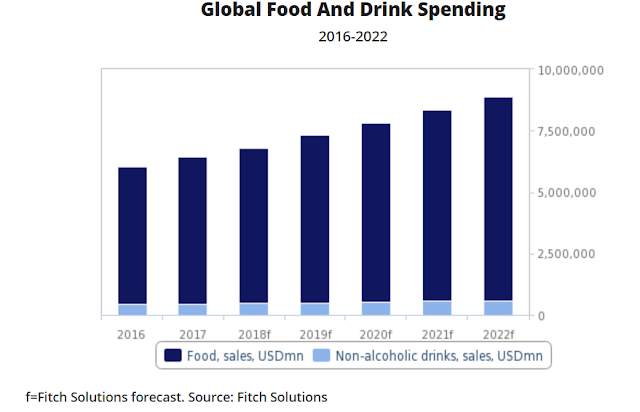Capitalizing on Consumer Trends in F&B
It’s a good time to be
small in the food and beverage industry. Experts predict that the 'big brand'
era in F&B manufacturing will soon be eclipsed by the small and the niche,
and it’s easy to see why: at the rate at which global consumers update their
tastes, diets and eating habits, opportunity now favors the small and middle
market players—provided, that is, they stay quick on their feet. F&B companies
must be nimble enough to respond to and reinvent for changing consumer
preferences and global trends, or risk finding themselves at the bottom of the
industry food chain.
But what
to innovate, and where? Paying
attention to key consumer food trends can point F&B companies in the right
direction—in both geographical location, and product sector.
Country-specific
trends
It’s crucial
for companies to decide which products to develop where. The industry is facing
enormous growth potential: BMI Research forecasts the global food and
non-alcoholic drinks industry to grow by 6.1% in 2018 and to average an annual growth rate of 6.8% over the next five years. To capitalize on these
growth opportunities, global export and international marketing are integral
tools in any manager’s strategic arsenal.
Of course, consumer
trends also adopt local flavors, and a company’s F&B export offerings should
match them. BMI Research predicts that rising incomes in emerging markets like
Mexico and China will see local diets gradually shifting to become more like
developed states, which offers rich opportunities for premiumization in various
F&B sectors.
Consumers in
Mexico are spending more on meat out of total expenditure every year,
particularly in the poultry and beef steak sub-segments where higher quality cuts
are more readily available. China is a key driver of the outperforming growth of dairy,
as rapidly emerging café and bakery culture sees young Chinese city dwellers
increasingly resembling Western countries in their consumption habits. To
exploit export opportunities in these respective countries, companies who play in F&B sectors that are
able to offer premium products can tailor their export strategy according to
these major trends.
General
consumer trends
More
broadly, there are trends that speak to consumers across the board—in particular, demands for more fresh, healthy and natural F&B choices, which bodes well
for the health food market. A recent study reported that global food companies
reformulated about 180,000 products in 2016 to meet changing preferences for
healthy diets.
An RSM
survey suggests various key trends companies should look out for, according to
the experience of other middle market industry players:
 |
| From RSM US |
While most companies seem attentive to health and wellness products as a key area for potential sales growth, the RSM survey points to a neglect of other trends that could present lost opportunities for maximizing strategic potential, particularly for non-US companies. Opportunities to develop convenient/easy-to-prepare food products have not been fully leveraged by most non-US companies, with similar gaps in ingredient transparency and labelling, non-allergen products, and non-GMO products, despite all these trends registering high in producing positive effect on sales over the last two years.
In sum, for
food and beverage companies to sustain growth, they need to determine how to
stay agile and adaptable: by harnessing a broad range of consumer trends, and by
adopting international marketing strategies to cater to country-specific trends.
Building a memorable brand can seem daunting amidst a veritable buffet of global
food and beverage products... after all, it’s eat or be eaten in the F&B
industry. But the opportunities are ripe for the picking. It’s time for the traditional
giants to move aside—this is the age of the small and savvy. Interested in exploring
your F&B export opportunities? Contact us to learn more about how we can help you grow your exports.
About us
Global Marketing
Associates has been helping companies expand globally for over 15 years,
including successful entry into the US. Contact us for a free consultation to
learn more about how we can help your company succeed.



Comments
Post a Comment